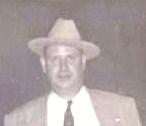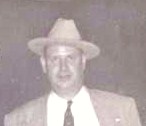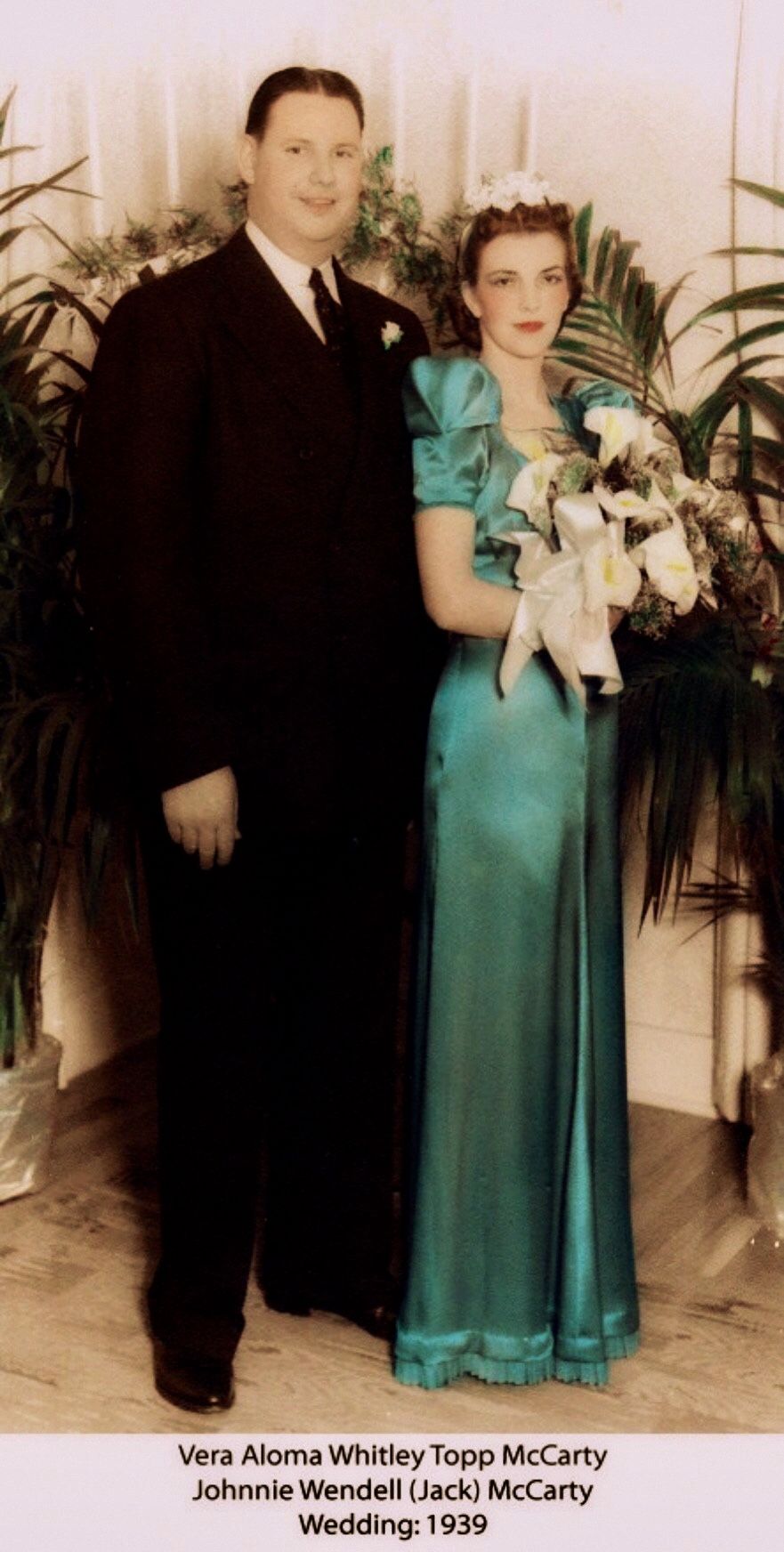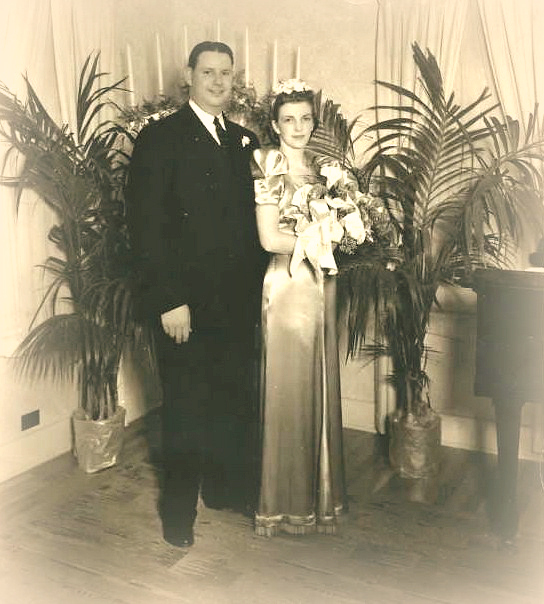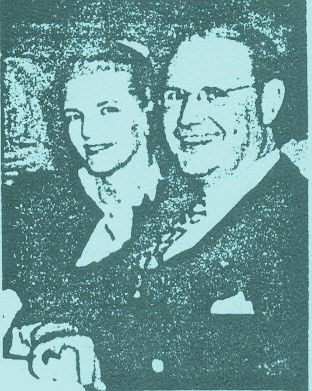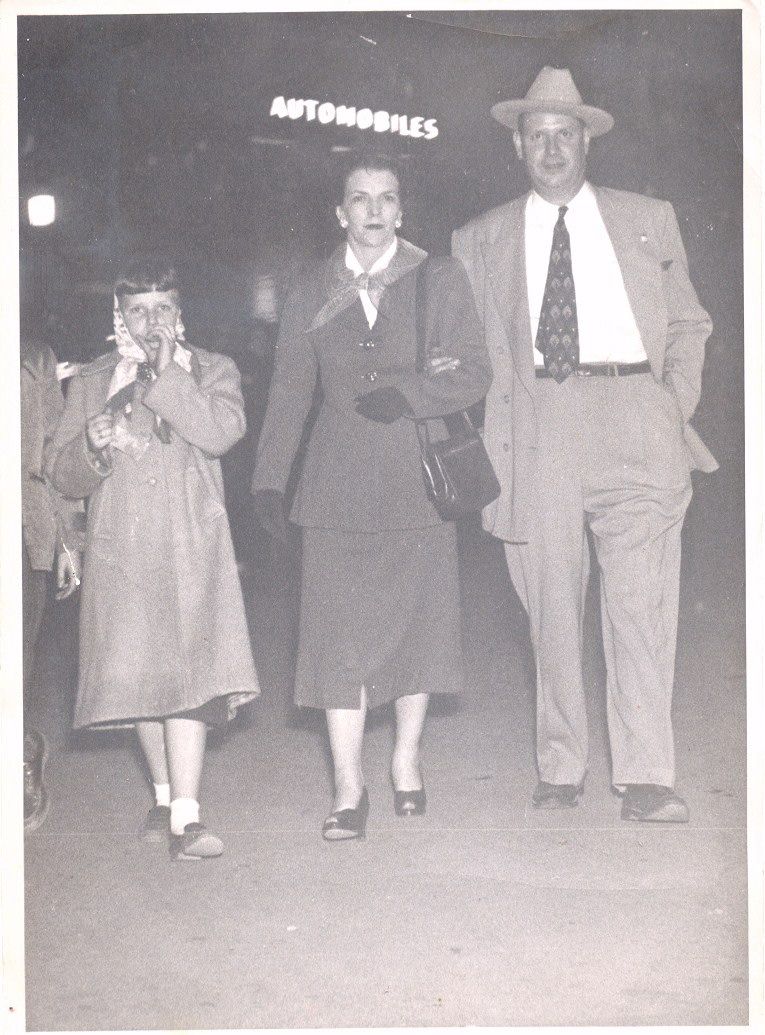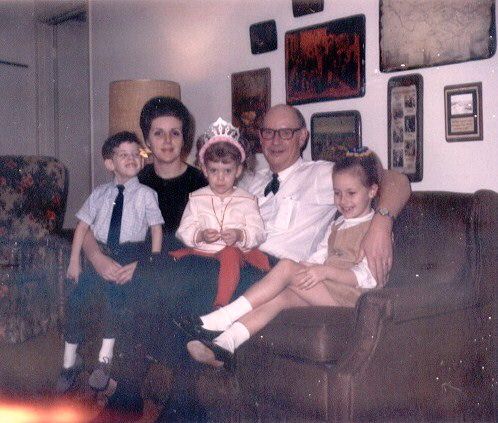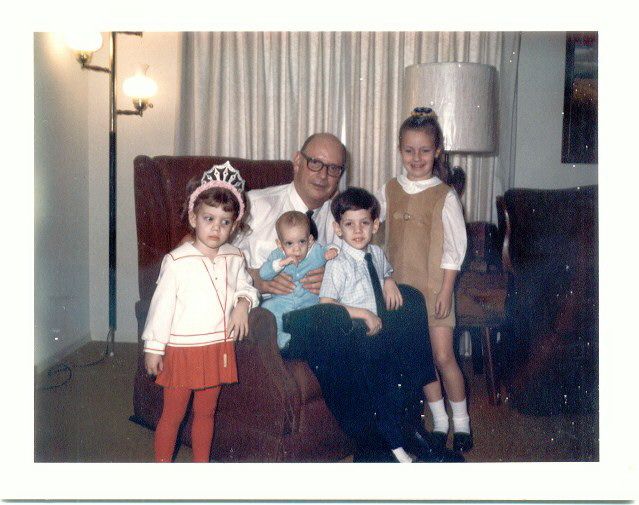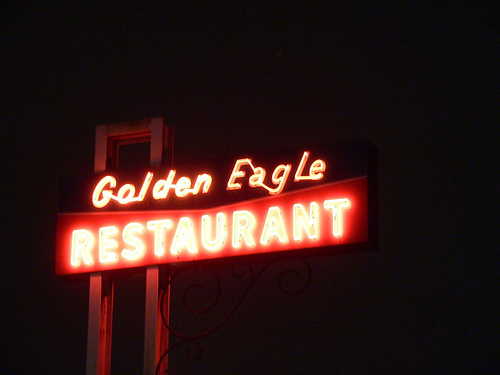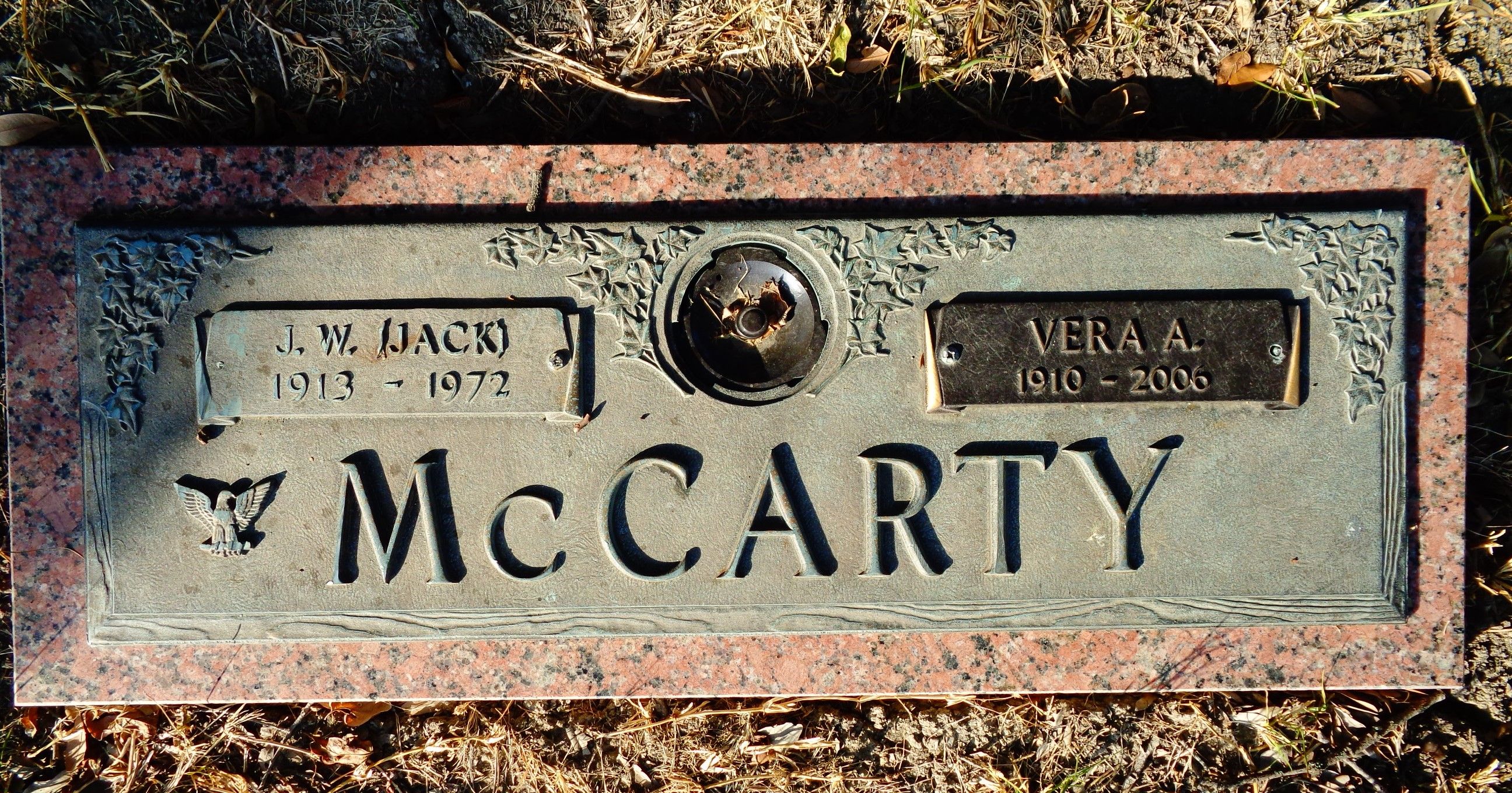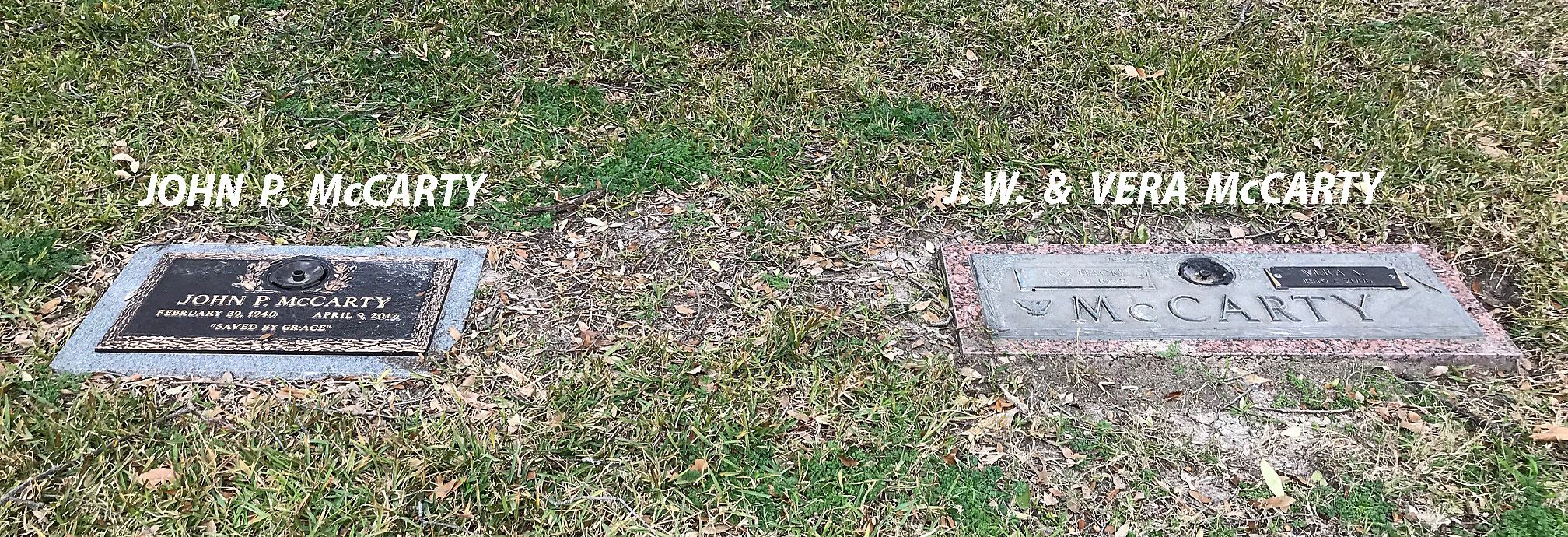Sadly, MD was killed in a train collision in 1928, while Dr John Richard followed him closely in death ... passing away in 1929. Jack’s mother, Lula, decided that a fresh start would be beneficial both for herself and her sole surviving child. The pair relocated to the ‘big city’ of Dallas, where Jack completed high school and played on the football team.
After some years spent establishing himself in the savings-and-loan business, Jack met the love of his life ~ a beautiful widow named Vera. The two married in 1939, and Jack adopted Vera’s young son, Harvey Dwight (‘HD’). In 1940 and 1941, two more children joined the family: a son, John Patt, and a daughter, Jacklin Diana (‘Jan’).
The US Navy called to Jack during World War II, and he served with honor. Upon his return, the McCartys continued to make ‘Big D’ their home. During the early 1950s, Jack and Vera purchased a residence and acreage located on the northern, rural outskirts of the city. Sitting on the banks of White Rock Creek (which flooded frequently), at what is now the southwest corner of Forest Lane and US 75, the white, clapboard homestead and its grounds provided the children with many adventures. Jack ran a hobby quail farm there with his younger son, and the children kept a menagerie of pets.
Family tradition relates that Jack found his true vocation because a business partner abandoned him to fate. Both men had invested in a foundling restaurant. The second gentleman - who had planned to manage the establishment - soon backed out, however, leaving Jack as both owner and operator. Thus, from about 1953 until his death in 1972, Jack discovered great fulfillment in a career he had entered only reluctantly: that of restauranteur.
Though challenging to imagine today, the little town of Richardson, Texas, was the ‘last bit of city’ between Dallas and and the Oklahoma border, in 1960. Miles of open, Blackland Prairie were cultivated and stretched out in every direction, punctuated by rural communities and county seats. Even so, suburban growth was on the horizon, and it was to Richardson that Jack and Vera moved in that year. Vera planted her real estate company just west of Central Expressway, while Jack’s Golden Eagle Restaurant - named for the local football team - grew up alongside.
Housed in a contemporary building featuring sandstone ornamentation, ‘The Eagle’ was a unique eatery. It offered standard diner fare throughout business hours, while opening a more upscale buffet, in a separate room, during the evenings and on Saturdays. Jack made regular trips to the Dallas Farmers’ Market (in season and where he had many friends) to ensure that fresh produce was available for food preparation. The roast beef on the menu was succulent, and the bread pudding ‘out of this world.’ Jack was an ever-present host at his restaurant ... dressed almost always in dark trousers, a starched white shirt and clip-on black tie.
On Sundays, Jack let the Golden Eagle rest. He enjoyed fishing and relaxing on the houseboat he docked at Lake Dallas ... not far removed from his hometown of Tioga. He loved his adopted community of Richardson, both paper-shell and native Texas pecans (for which he kept festive nutcrackers), the Texas State Fair, Christmas-time and his family. He was a Shriner.
Sadly, MD was killed in a train collision in 1928, while Dr John Richard followed him closely in death ... passing away in 1929. Jack’s mother, Lula, decided that a fresh start would be beneficial both for herself and her sole surviving child. The pair relocated to the ‘big city’ of Dallas, where Jack completed high school and played on the football team.
After some years spent establishing himself in the savings-and-loan business, Jack met the love of his life ~ a beautiful widow named Vera. The two married in 1939, and Jack adopted Vera’s young son, Harvey Dwight (‘HD’). In 1940 and 1941, two more children joined the family: a son, John Patt, and a daughter, Jacklin Diana (‘Jan’).
The US Navy called to Jack during World War II, and he served with honor. Upon his return, the McCartys continued to make ‘Big D’ their home. During the early 1950s, Jack and Vera purchased a residence and acreage located on the northern, rural outskirts of the city. Sitting on the banks of White Rock Creek (which flooded frequently), at what is now the southwest corner of Forest Lane and US 75, the white, clapboard homestead and its grounds provided the children with many adventures. Jack ran a hobby quail farm there with his younger son, and the children kept a menagerie of pets.
Family tradition relates that Jack found his true vocation because a business partner abandoned him to fate. Both men had invested in a foundling restaurant. The second gentleman - who had planned to manage the establishment - soon backed out, however, leaving Jack as both owner and operator. Thus, from about 1953 until his death in 1972, Jack discovered great fulfillment in a career he had entered only reluctantly: that of restauranteur.
Though challenging to imagine today, the little town of Richardson, Texas, was the ‘last bit of city’ between Dallas and and the Oklahoma border, in 1960. Miles of open, Blackland Prairie were cultivated and stretched out in every direction, punctuated by rural communities and county seats. Even so, suburban growth was on the horizon, and it was to Richardson that Jack and Vera moved in that year. Vera planted her real estate company just west of Central Expressway, while Jack’s Golden Eagle Restaurant - named for the local football team - grew up alongside.
Housed in a contemporary building featuring sandstone ornamentation, ‘The Eagle’ was a unique eatery. It offered standard diner fare throughout business hours, while opening a more upscale buffet, in a separate room, during the evenings and on Saturdays. Jack made regular trips to the Dallas Farmers’ Market (in season and where he had many friends) to ensure that fresh produce was available for food preparation. The roast beef on the menu was succulent, and the bread pudding ‘out of this world.’ Jack was an ever-present host at his restaurant ... dressed almost always in dark trousers, a starched white shirt and clip-on black tie.
On Sundays, Jack let the Golden Eagle rest. He enjoyed fishing and relaxing on the houseboat he docked at Lake Dallas ... not far removed from his hometown of Tioga. He loved his adopted community of Richardson, both paper-shell and native Texas pecans (for which he kept festive nutcrackers), the Texas State Fair, Christmas-time and his family. He was a Shriner.
